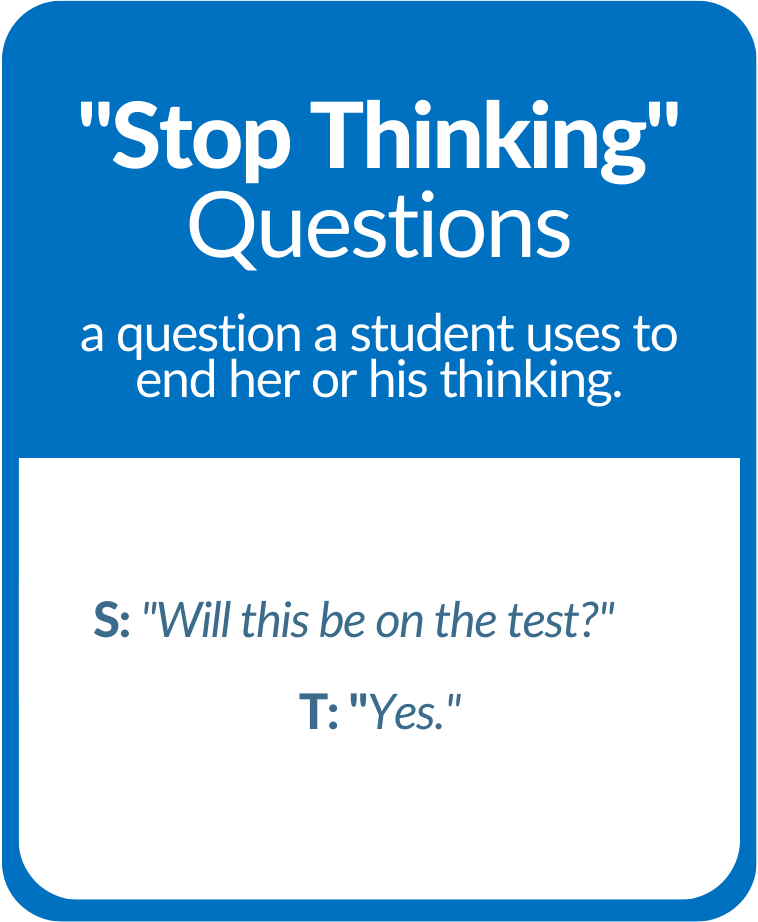Building Thinking Classrooms, Building Conversational Classrooms
Building thinking classrooms is a rapidly-growing educational approach that aims to help students cultivate critical thinking, problem-solving skills, and active engagement.
It moves beyond the more sage-on-the-stage teaching styles that focus on information transfer, memorization, and passive learning. Instead, the building thinking classrooms movement emphasizes developing students' thinking skills in conversation-centered classrooms.
Teaching to build thinking classrooms means asking questions that deepen students’ learning, challenging what Peter Liljedahl has called the fundamental passivity of classroom seating, and purposefully promoting group discussion as a way to inspire iterative thinking.
To build thinking classrooms, build thinking PD
Teachers teach the way they are taught. If we want teachers to teach in ways that build thinking classrooms, they must experience learning through PD that builds thinking classrooms.
As Amy Kinder of Jordan, Utah said on a recent TeachFX webinar, “We tell [our teachers], you should teach like this, but they don't ever get to experience it…We can’t simply say to our teachers, ‘I want your students to talk more and do more talking.’”
What’s more, it can be uncomfortable, or even challenging, to get students willing to share their thinking out loud. But when they’ve experienced the strategies themselves as learners in PD, they have strategies they’re confident to use.
Rakiya leading a workshop on engaging math teaching methods at the Building Thinking Classrooms conference.
It's been ten years since NCTM’s Principles to Actions: Ensuring Mathematical Success for All declared that effective teaching of mathematics “facilitates discourse among students to build shared understanding of mathematical ideas by analyzing and comparing student approaches and arguments.”
And yet, TeachFX is rare in providing teachers with engaging, conversational professional development that allows them to experience and try on the teaching styles that they bring back to their classrooms.
That’s just what our own Rakiya Brown did in a session she co-facilitated at the recent Building Thinking Classrooms conference, and we’re sharing with you here a glimpse of what teachers took away from that experience.
To increase conversation in the classroom, know who’s doing the talking in the classroom
A central tenet of the building thinking classrooms movement is creating space for students to engage in thinking out loud.
But how do you know if you’re creating more time for student and group talk in your classroom?
In years past, teachers or the instructional leaders observing them have attempted to get a baseline on student talk manually. You might’ve been that person sitting in the back of the room, using the timer on your phone and a paper and pen to jot down every time a student speaks. These old approaches were inefficient and often inaccurate, and the results so time-consuming to review.
With TeachFX, teachers can see for themselves exactly how much time in any given lesson was teacher talk, student talk, group talk or silence.
The aim in a building thinking classrooms approach is to have more student or group talk time than teacher talk time. And to gauge the quality of that talk, by hearing and seeing the use of academic vocabulary by teacher and students.
Once you can see how the time in your lesson is being split, you can ask yourself: how am I structuring my classroom to support a building thinking classrooms approach?
And…the next time you TeachFX a lesson, you’ll know if your student and group talk increased, as well as how academic vocabulary was used.
Ask questions that help students keep thinking towards the answers
The amount of time you spend talking, or creating space for students to talk, is just the beginning.
Creating space for students to think out loud can often start with how you respond to students’ comments – and the types of questions you ask.
Immediately responding to a student with whether they’re correct stops the thinking. Instead, first celebrate the process and effort involved by building on students’ contributions. (Here are six ways to build on student contributions, and how TeachFX can help you celebrate those moments).
You can also respond to students with questions, rather than answers. What kinds of questions could you ask to keep the thinking going?
Consider these three types of questions for building thinking classrooms and how you might respond to them: proximity questions are asked when a teacher is close to the answer; stop thinking questions are closed-ended questions that stop the thinking short (like: will this be on the test), and keep thinking questions are open-ended questions that will keep students building on their thinking.
Create space for students to explain each others’ ideas out loud
Having students explain others’ work is so powerful; classroom is a community, not just individual learners; helps deepen understanding to explain work of a group they weren’t part of; show multiple ways to solve one question
Engaging students in thinking about their thinking as well as thinking about their peers’ thinking, getting students more engaged in the process than the product
With TeachFX, you can see and celebrate both kinds of conversations happening in your classroom, as you continue to explore how to build thinking classrooms for your students.
Building thinking classrooms really means creating more conversational classrooms
By implementing these principles, teachers create an environment that nurtures students' intellectual growth, fosters a love for learning, and equips them with essential thinking skills that can be applied beyond the classroom. Building thinking classrooms empowers students to become lifelong learners, critical thinkers, and active contributors to society.
One really easy way that you can reflect on the impact of Building Thinking Classrooms is by using TeachFX.
TeachFX is super easy to use. Teachers simply press record at the beginning of their lesson and the stop at the end of the lesson. We then analyze the recording and the teacher receives an analysis of the dynamics in their classroom. It’s on-demand PD, and driven by the teacher. It’s like PD in your pocket. And you can give it a try for free right now.





